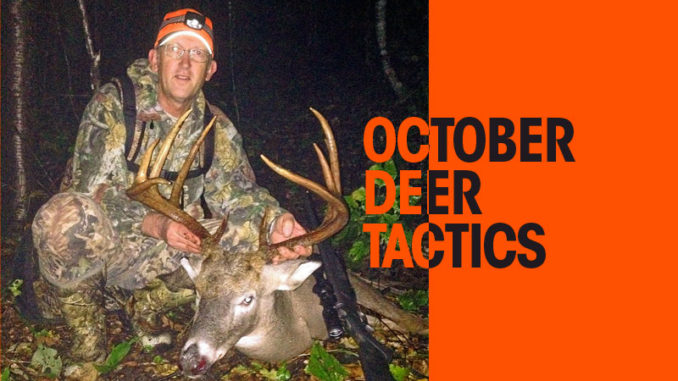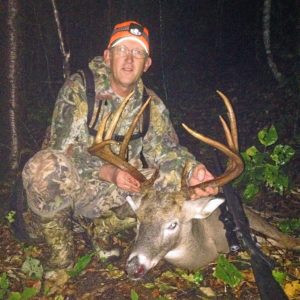
Deer hunters across North Carolina carry a variety of weapons into the woods in October. Archery season is the ticket in the northwestern corner of the state and throughout the Piedmont. Muzzleloader season arrives in the eastern part of the state on Oct. 3 for 12 days, followed by gun season. And in the western part of the state, muzzleloader season runs Sept. 28-Oct. 10, followed by the second half of archery season.
No matter which weapon you carry afield this month, here are a few tactics that will help you fill a deer tag or two:
• Deer hunting in October is markedly different from September because food sources change. After farmers harvest agricultural crops, deer sometimes seem to disappear, but they haven’t gone far. Deer react to food changes but often return to fields at evening as the rut nears and to eat bait.
• Because of landscape changes, i.e. falling leaves, deer may seek new bedding areas. As temperatures drop, deer may seek warmer places to bed down. Changing bedding areas shift travel routes and feeding areas.
• More hunters will be in the October woods because of fewer biting insects and more comfortable temperatures. As a result, deer become more alert and may move deeper into woods.
•

Forget about moving stands closer to bedding areas this month. Hunters shouldn’t add pressure on an area, especially before the rut arrives. For the same reason, if you see a big buck, don’t go into the woods to set up trail cameras.
• The pre-rut is the best time to bag a buck. Once the rut starts, bucks may hole up with days for days.
• Use deer attractants in October. Even though most does aren’t ready to be bred, a lone doe in estrust will attract bucks.
• Pre-rut October days also are good times to use rattling horns. Bucks will come to rattling horns because that often means a hot doe in the vicinity.
• If you have permission, plant food plots during August and early September in woods openings, especially leafy green plants such as kale or winter wheat. Deer love to eat greenery after agricultural fields turn brown.
• Add a little extra fertilizer to food plots two weeks before you plan to start hunting. It’ll spark a growth surge and add sweetness to the plot.
•  Use decoys. When whitetails come into a field, they’ll move toward other deer.
Use decoys. When whitetails come into a field, they’ll move toward other deer.
• Check for entry and exit trails at fields if you hunt evenings. Place stands at least 75 yards from the field’s edge near entry trails. Bucks often circle fields downwind to scent other deer. Look for rubs marks on tree trunks facing away from fields. Bucks often work rub trees as they head toward fields.
• Bowhunters in tree stands should use a range-finder to know exact distances to deer.
• Practice target bow shots from elevated positions. Get used to how a bow throws arrows from a tree-stand height.


Be the first to comment